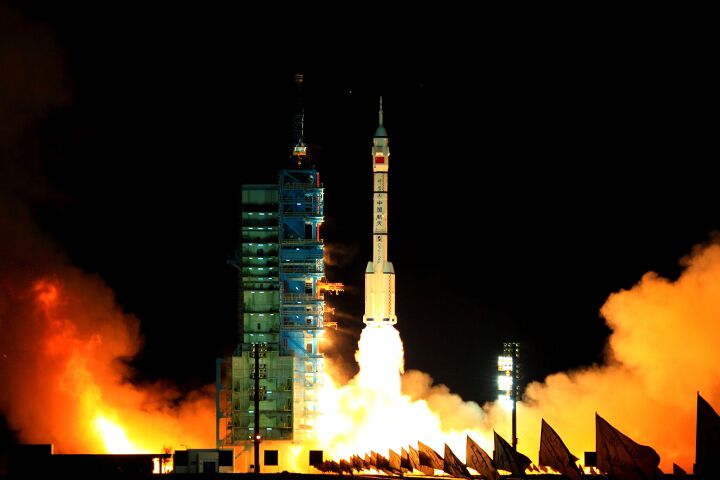
China’s Quiet Military Space Program
China’s latest five-year plan on space exploration talks a lot about peace. The white paper, published at the end of 2011, mentions “peace” or “peaceful” a dozen times. But almost every major plan it details has important military applications.
“Most media have chosen to focus on Beijing’s vague aspirations towards deep-space and manned exploration,” writes formal Royal Navy officer and author on military matters Lewis Page in the Register, “but in fact the concrete details given all point toward a primary emphasis on strategic advantage for China here on Earth.”
The talk of peace is just a distraction. China’s space program is run by the military.
In the past, China’s bombastic approach to its space program has upset governments around the world and spurred talk of a new space race, or even a space arms race, between the United States and China. This report is more diplomatic.
China does not want a new space race. It would lose, by a mile. America is already far out in front. It doesn’t want America to start racing. It wants America to keep standing still, or even stumbling backward in its space program, while it quietly catches up.
Hence its new five-year plan—a military plan for space, but a quiet one.
“If China’s space plans come to fruition—and its track record over the last decade puts the odds in its favor—it will possess one of the world’s most robust and diverse space systems, many with military applications,” writes Matt Durnin in the Wall Street Journal.
“The technologies mentioned are only discussed in a civilian context,” he writes, “but several of these new capabilities have important consequences on the battlefield as well.”
Durnin and Page detail how each element of China’s plans can be used for the military.
The Long March 5 rocket more than doubles the weight of satellite that China can carry into low Earth orbit. “More launch horsepower means that, among other things, China can build larger, higher-resolution reconnaissance satellites,” writes Durnin.
The Long March 6 and 7 are designed to take satellites into a sun-synchronous orbit, which is “a type of orbit preferred for spacecraft whose primary mission is looking down on the planet beneath,” writes Page.
“Sometimes this is for wholly scientific purposes, but generally such satellites can be very useful for espionage and military tasks—even if they are ostensibly scientific or commercial in nature, and are genuinely used as such much of the time,” he continues.
China announced that it would develop a “high-resolution Earth observation system” with radar and other types of satellites for “environment and disaster monitoring”—i.e. surveillance. It wants to dramatically expand its network of spy satellites, but is trying to make it sound friendly.
Finally, as the Trumpet has previously covered, it announced it plans to complete its Beidou satellite navigation system by 2020. It should be operational in the Asia-Pacific region “before 2012,” it said. Page explains why owning a satellite navigation system is essential for a modern military:
Using unassisted astro and inertial guidance an icbm warhead can strike with enough precision to destroy a city: but aided by gps it can hit close enough to its target coordinates to take out a deeply buried, hardened missile silo. … Nowadays satellite navigation is of broader military significance: It is vital to the functioning of smart bombs and other conventional precision weapons of all kinds, not to mention general navigation and operations by ships, aircraft, vehicles and even foot soldiers. And outside the military sphere, many governments around the world look with disquiet on the growing dependence of their civilian shipping, aviation, even in time road and rail transport, on assets controlled by a foreign defense department.
Only America owns its own satellite navigation system, but Russia, China and the EU are all building one.
While America’s space program flounders, the rest of the world is intent on catching up.
America may have a big lead, but it’s squandering it, while other nations are doggedly catching up. “nasa’s direction tends to shift with every change of presidency,” write Edward Wong and Kenneth Chang in the New York Times.“President George W. Bush called on nasa to return to the moon by 2020. President Obama cancelled that program and now wants the agency to send astronauts to an asteroid.”
How different to nasa’s long-term planning toward one objective that meant it reached the moon in 1969. Today’s vacillating means nasa wastes billions while China produces dedicated and consistent five-year plans, and then follows through on those plans.
America’s lead in space is being eroded, which means it is losing its military edge over other powers.
